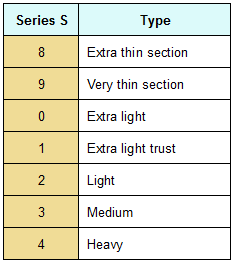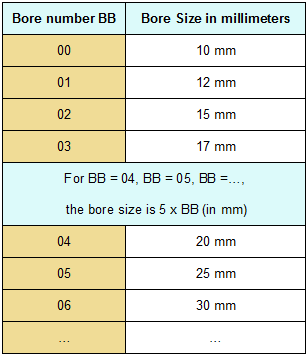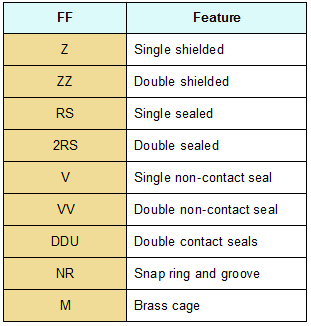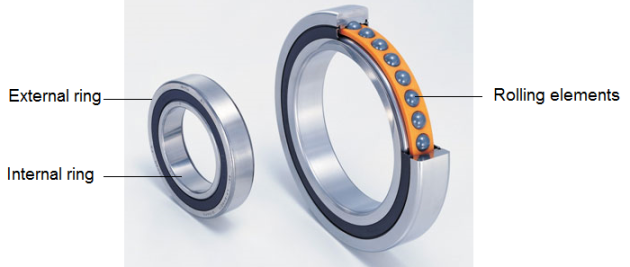PURPOSE OF BEARINGS, LOADS, MATERIAL, CONSTRUCTION
A bearing is a device to permit constrained relative motion between two parts, typically rotation or linear movement. Bearings may be classified broadly according to the motions they allow and according to their principle of operation as well as by the directions of applied loads they can handle.
See below: An example of four-point contact ball bearing.

1. CONSTITUTION:
Bearings consist of:
Bearings tracks:
An internal ring (interdependent of the shaft after the assembly),
An external ring (interdependent of the bore after the assembly).
Rolling elements being presented in the form of balls, rollers (cylindrical, conical...) or pointers (low diameter compared to their length).
See below: Various shapes of rollers.

A cage keeping the rolling elements in position: this cage can be made from compressed or massive sheet of steel or brass, light alloy, steel, plastic, etc.

2. DESIGNATION:
Bearing designations are divided into two main groups: designations for standard bearings and designations for special bearings. Standard bearings are bearings that normally have standardized dimensions, whereas special bearings have special dimensions dictated by customer demands.
These customized bearings are also referred to as "drawing number" bearings and they will not be covered in detail in this section.
2.1. Standard metric bearing designation:
The basic denomination of a bearing is usually of the form: ![]()
Where C is the type code, S the series, BB the bore size and FF are special features.
If the first digit is a number, the bearing is a metric bearing, and the second digit S is the series, which reflects the robustness of the bearing. The series are, from lightest to heaviest:

The third and fourth digits BB indicate the bore size in millimeters. Except for 0 through 3, the bore size is simply five times the third and fourth digits together. 0 through 3, however, are different:

2.2. Standard inch bearing designation:
If the bearing is an inch bearing (the first digit in the number is an R), then the size is the digit or digits immediately following the R, in 16ths of an inch.
An R8-2RS bearing, for example, has an 8/16 th or 1/2 inch bore.
The last letters FF indicate special features about the design of the bearing.
For example:

